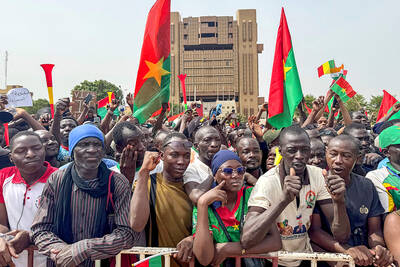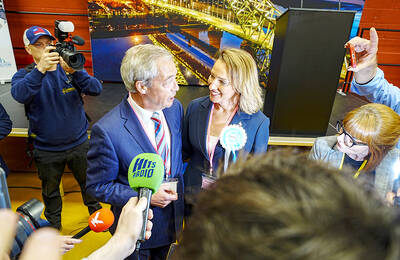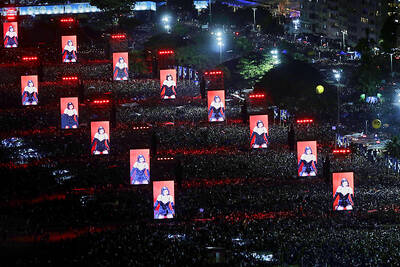India has decided to buy 126 fighter jets from France, taken delivery of a nuclear-powered submarine from Russia and prepared for its first aircraft carrier in recent weeks as it modernizes its military to match China’s.
Relations between India and China have been tense since a 1962 border war, and New Delhi has watched with dismay in recent years as Beijing has increased its influence in the Indian Ocean.
China has financed the development of ports in Pakistan, Sri Lanka, Bangladesh and Myanmar, and its recent effort to get access to the Seychelles prodded New Delhi to renew its own outreach to the island state off western India.
With its recent purchases running into tens of billions of US dollars, India is finally working to counter what it sees as aggressive incursions into a region it has long dominated.
“The Indian military is strengthening its forces in preparation to fight a limited conflict along the disputed border, and is working to balance Chinese power projection in the Indian Ocean,” US Director of National Intelligence James Clapper told a US Senate committee last week.
India has created new infantry mountain divisions and plans to raise a strike corps aimed at countering aggression by China. The border between the two countries has still not been set despite 15 rounds of talks, and patrols frequently face off on the ground.
Analysts say that although the probability of a conflict between the two is remote, a short, sharp conflict in the disputed Himalayan heights cannot be ruled out.
“Over the last couple of years, the Chinese have been acting more and more aggressively in the political, diplomatic and military arena,” said retired Brigadier Gurmeet Kanwal, director of the Indian army-funded Centre for Land -Warfare Studies in New Delhi.
Indian leaders and defense strategists have fretted as China has modernized its forces and extended its military advantage over India. For some in New Delhi, countering China is taking precedence even over checking longtime rival Pakistan.
The drive to modernize Indian forces was long overdue as much of the equipment was obsolete Soviet-era weapons, and the orders for fighter jets, naval frigates, helicopters and armaments have made India the world’s largest importer of arms. The Stockholm International Peace Research Institute said India accounted for 9 percent of global weapons imports in 2010, the latest year for which figures are available.
The order of 126 combat aircraft, won by France’s Dassault, followed a bitter battle by global jet manufacturers. The initial cost for the fighter jets is estimated as US$11 billion, but on-board weaponry, technology transfers, maintenance, warranties and other costs are expected to almost double the price.
The Indian Navy last week took command of a Russian Nerpa nuclear submarine, renamed INS Chakra-II, at the Russian port of Vladivostok, propelling India into an elite group of countries operating underwater nuclear-powered vessels. It joins the US, France, Russia, Britain and China.
The Chakra-II, on lease for 10 years at a cost of nearly US$1 billion, is expected to be inducted into the navy by next month. Later this year, India is expected to take delivery of a retrofitted Soviet-built aircraft carrier.
In addition, six Scorpene subs being built in India under license from France in a US$5 billion deal are expected to start going into service in 2015, three years behind schedule, Indian Defense Minister A.K. Antony said.
Some Indian military experts complain that the country is not doing enough to upgrade its forces to the level befitting the regional power it aspires to be.
“It is not only China that is rising. India is on the ascent too, and it is a trend that will continue for some decades,” retired Air Vice Marshal Kapil Kak at the Centre for Air Power Studies in New Delhi said.
India may be worrying over -China’s overtures to its neighbors, but New Delhi is also reaching out to the Southeast Asian and East Asian countries in Beijing’s backyard.
India has struck a strategic partnership with Vietnam, including helping Hanoi beef up its defense capabilities.
Nowhere is the contest between China and India more evident than in Myanmar, where both are caught in a race to gain access to the country’s natural gas sources.
India has raised two mountain divisions of soldiers to add to its existing high-altitude troops. About 36,000 soldiers and officers from the divisions have been posted in the remote northeast, not far from India’s Arunachal Pradesh State, which China claims as part of its territory.
A proposal for a mountain strike corps is awaiting clearance by India’s Cabinet, and an independent armored brigade for the mountain region also is in the works. India hopes to show it can strike deep beyond its neighbor’s borders to serve as a deterrent for any Chinese aggression, Kanwal said.
“India is building up its capability for offensive operations in the mountains with a view to taking the fight into Chinese territory,” he added.

Kehinde Sanni spends his days smoothing out dents and repainting scratched bumpers in a modest autobody shop in Lagos. He has never left Nigeria, yet he speaks glowingly of Burkina Faso military leader Ibrahim Traore. “Nigeria needs someone like Ibrahim Traore of Burkina Faso. He is doing well for his country,” Sanni said. His admiration is shaped by a steady stream of viral videos, memes and social media posts — many misleading or outright false — portraying Traore as a fearless reformer who defied Western powers and reclaimed his country’s dignity. The Burkinabe strongman swept into power following a coup in September 2022

‘FRAGMENTING’: British politics have for a long time been dominated by the Labor Party and the Tories, but polls suggest that Reform now poses a significant challenge Hard-right upstarts Reform UK snatched a parliamentary seat from British Prime Minister Keir Starmer’s Labor Party yesterday in local elections that dealt a blow to the UK’s two establishment parties. Reform, led by anti-immigrant firebrand Nigel Farage, won the by-election in Runcorn and Helsby in northwest England by just six votes, as it picked up gains in other localities, including one mayoralty. The group’s strong showing continues momentum it built up at last year’s general election and appears to confirm a trend that the UK is entering an era of multi-party politics. “For the movement, for the party it’s a very, very big

ENTERTAINMENT: Rio officials have a history of organizing massive concerts on Copacabana Beach, with Madonna’s show drawing about 1.6 million fans last year Lady Gaga on Saturday night gave a free concert in front of 2 million fans who poured onto Copacabana Beach in Rio de Janeiro for the biggest show of her career. “Tonight, we’re making history... Thank you for making history with me,” Lady Gaga told a screaming crowd. The Mother Monster, as she is known, started the show at about 10:10pm local time with her 2011 song Bloody Mary. Cries of joy rose from the tightly packed fans who sang and danced shoulder-to-shoulder on the vast stretch of sand. Concert organizers said 2.1 million people attended the show. Lady Gaga

SUPPORT: The Australian prime minister promised to back Kyiv against Russia’s invasion, saying: ‘That’s my government’s position. It was yesterday. It still is’ Left-leaning Australian Prime Minister Anthony Albanese yesterday basked in his landslide election win, promising a “disciplined, orderly” government to confront cost-of-living pain and tariff turmoil. People clapped as the 62-year-old and his fiancee, Jodie Haydon, who visited his old inner Sydney haunt, Cafe Italia, surrounded by a crowd of jostling photographers and journalists. Albanese’s Labor Party is on course to win at least 83 seats in the 150-member parliament, partial results showed. Opposition leader Peter Dutton’s conservative Liberal-National coalition had just 38 seats, and other parties 12. Another 17 seats were still in doubt. “We will be a disciplined, orderly